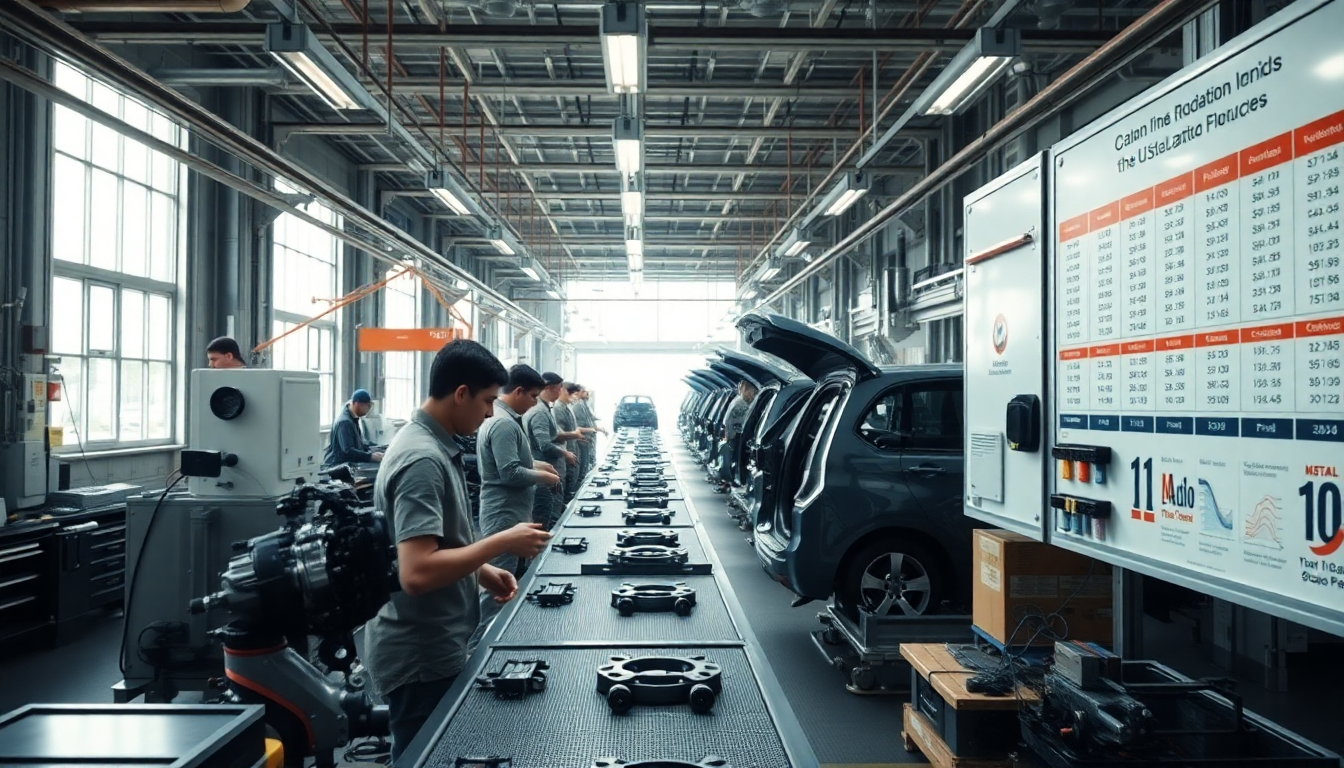Table of Contents
Have you ever wondered how international trade policies can ripple through local communities? The recent tariff measures imposed by the United States have created quite a stir in Canada’s manufacturing sector. With deadlines fast approaching, employers and employees alike are on high alert, anticipating potential fallout that could disrupt their jobs and the economy at large.
For those involved in the automotive industry, a key player in Canada’s manufacturing landscape, the stakes couldn’t be higher. The situation is further complicated by the intricate ties between the US and Canadian economies, particularly in border regions.
The Current State of Canadian Manufacturing Amid Tariff Threats
Take Windsor, Ontario, for example. This city is at the heart of Canada’s manufacturing scene, especially when it comes to automotive production. Workers like Krysten Lawton, who has dedicated 30 years to Ford Motor Company, are feeling the pinch of tariff announcements.
As a fourth-generation auto worker, Lawton embodies a community that thrives on manufacturing jobs, which make up 19 percent of Windsor’s workforce. The recent tariffs on steel and aluminum, along with threats of increased taxes on automotive imports, have left many in the region anxious about their job security and financial futures.
The interconnectedness of the manufacturing sector means that changes in US policies can have immediate effects here in Canada. Manufacturing is a significant contributor to Canada’s GDP, employing over 1.7 million people. When tariffs come into play, the impact stretches far beyond individual jobs—it can shake the very economic foundations of entire communities.
In 2022, Canadian manufacturers exported goods worth CAD 356 billion to the US, underscoring just how vital smooth trade relations are.
As the Trump administration signals more aggressive tariff strategies, anxiety grows among Canadian manufacturers and their employees. “It definitely has real human impact,” Lawton shares, capturing a sentiment that resonates with many.
The health of cross-border supply chains is critical, and the looming threat of increased costs and diminished competitiveness weighs heavily on workers’ minds.
Impacts of Tariffs on Employment and Investment Patterns
The uncertainty surrounding these tariffs is creating a chilling effect on investment decisions throughout the manufacturing sector. Economic experts are sounding alarms, noting that this volatility hampers long-term planning and growth. Alex Greco from the Canadian Chamber of Commerce points out that “volatility continues to be the new certainty,” which means businesses are now more hesitant than ever to make significant investments or expand operations amidst shifting trade policies.
The ripple effects are already being felt, with substantial layoffs occurring in several industries, particularly in automotive and metal manufacturing. In fact, the Canadian GDP declined in April, largely due to contractions in manufacturing—an immediate indication of how tariff-related uncertainties can affect the economy.
Despite these challenges, some experts remain cautiously optimistic. Catherine Connelly from McMaster University notes that employment figures have stayed relatively stable for now, suggesting that the situation could stabilize if tariffs don’t lead to drastic layoffs or inflation. However, the ongoing threat of tariffs continues to generate anxiety, particularly among younger workers who may not have the same job security as their more senior counterparts.
Future Outlook: Navigating Tariff Challenges
As Canada’s manufacturing sector navigates the turbulent waters of US tariffs, the outlook remains uncertain. The decades of cooperation that have forged strong supply chain connections across the Canada-US border are now under threat. Economists warn that sustained tariffs could spell disaster for industries reliant on cross-border trade, potentially deepening the economic challenges faced by manufacturing-dependent communities.
For workers like Lawton, the stakes are deeply personal. The potential for job loss and economic instability creates immense pressure on families relying on these well-paying jobs. Many are rethinking their financial strategies, saving more aggressively in anticipation of tougher times ahead. “You have to be able to bounce,” Lawton advises, emphasizing the importance of adaptability in an ever-changing economic landscape.
As this complex situation unfolds, it’s crucial for policymakers to weigh the long-term implications of tariff strategies on both sides of the border. The future of the manufacturing sector will depend on effective negotiations and a balanced trade approach that supports both workers and industries alike.





